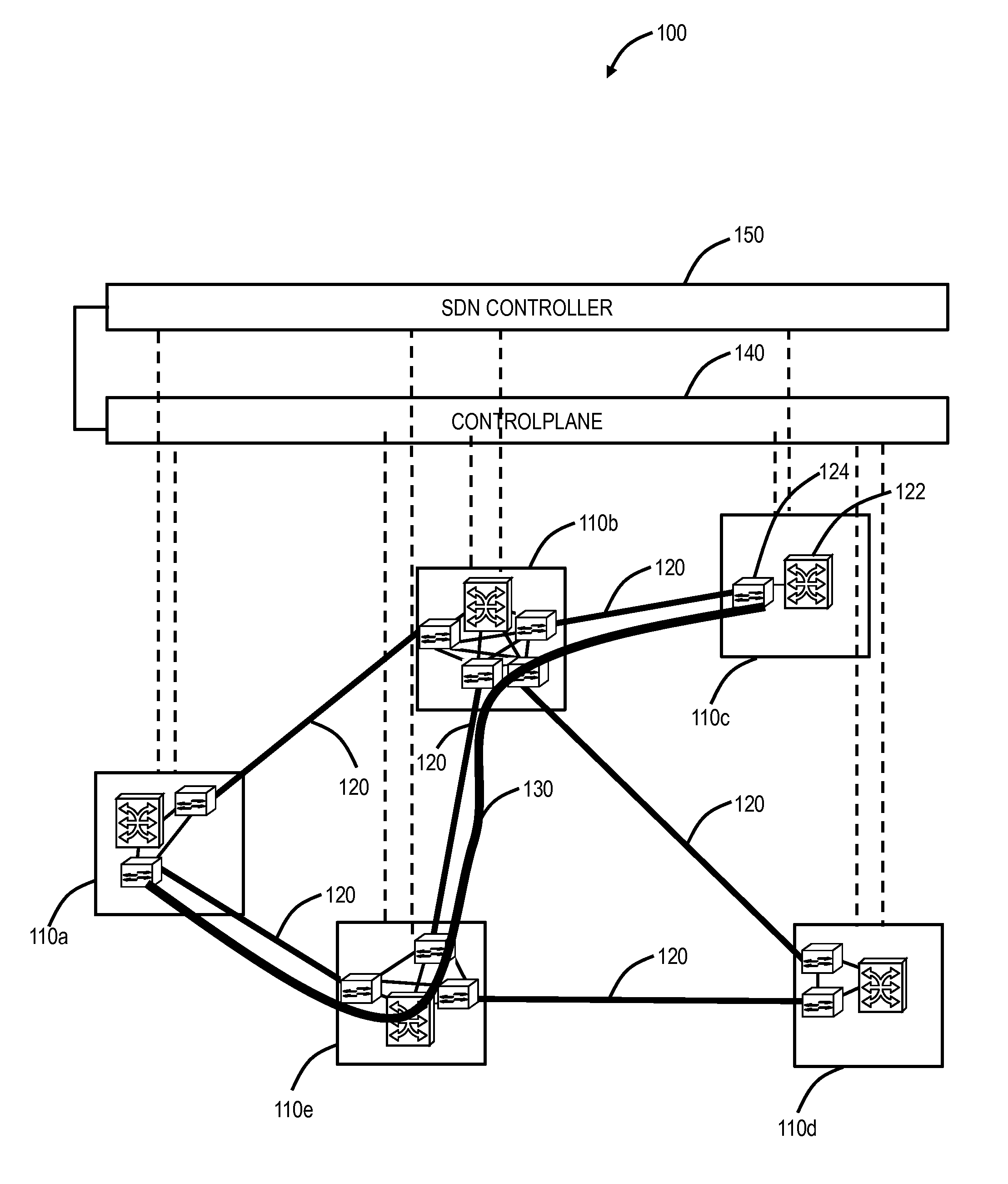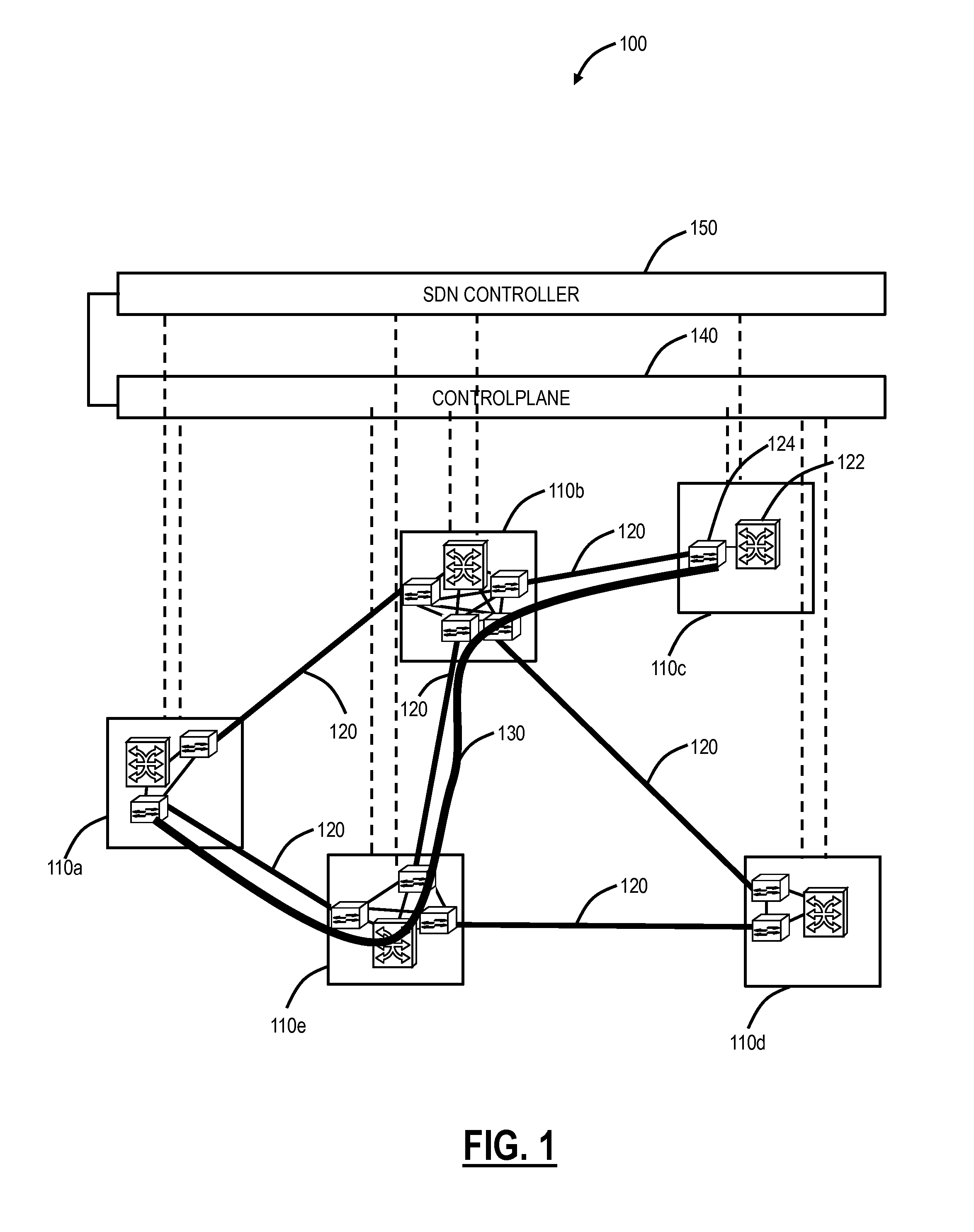Bandwidth optimization systems and methods in networks
a network and bandwidth optimization technology, applied in the field of network bandwidth optimization systems and methods, can solve the problems of no longer being optimally routed, less than ideal resource utilization, poor network utilization, etc., and achieve the effect of improving network resources, reducing total resources, and improving network resources
- Summary
- Abstract
- Description
- Claims
- Application Information
AI Technical Summary
Benefits of technology
Problems solved by technology
Method used
Image
Examples
Embodiment Construction
[0018]In various exemplary embodiments, bandwidth optimization systems and methods are described in networks. The systems and methods can restore a network to an optimal or near optimal state with respect to resource utilization. The systems and methods operate by finding candidate connections with inefficient resource allocation and by re-establishing them so that they use resources more effectively. The candidate connections can be moved in space (to use a different path) and / or in time (starting earlier or later). The candidate connections can be existing connections or connections that are scheduled but not yet in progress or even connections that are expected to arrive based on traffic forecasts and are allocated resources on that basis. These candidate connections can be discovered through a combination of path computation algorithms and filtering criteria that assess the benefit of moving a given connection.
[0019]The systems and methods can be triggered either by a schedule o...
PUM
 Login to View More
Login to View More Abstract
Description
Claims
Application Information
 Login to View More
Login to View More - R&D
- Intellectual Property
- Life Sciences
- Materials
- Tech Scout
- Unparalleled Data Quality
- Higher Quality Content
- 60% Fewer Hallucinations
Browse by: Latest US Patents, China's latest patents, Technical Efficacy Thesaurus, Application Domain, Technology Topic, Popular Technical Reports.
© 2025 PatSnap. All rights reserved.Legal|Privacy policy|Modern Slavery Act Transparency Statement|Sitemap|About US| Contact US: help@patsnap.com



